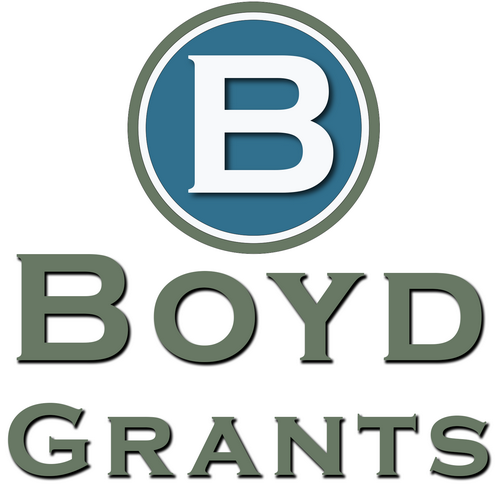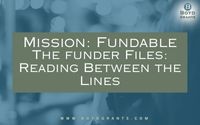Welcome back, strategist.
This month, we’re popping open the Funder Files to explore one of the most overlooked yet critical skills in grant seeking:
How to interpret what a funder really wants—even when they don’t say it outright.
Funder guidelines and RFPs are full of big-picture language, strategic goals, and values-driven phrasing. But behind that polished prose are the real priorities that influence funding decisions.
So how do you read between the lines?
How do you translate “community-led equity initiatives” into something concrete your program can deliver?
Let’s dig into the decoder ring, shall we?
Deep Dive: How to Decode Funder Language
Funders, like all humans (and institutions), say one thing, mean another, and fund something else entirely—and not maliciously! Their public language is crafted to be broad, inclusive, and visionary.
Your job is to translate it into practical alignment with your work.
Here’s how:
Step 1: Identify Strategic Phrases
These are commonly used but often vague. Examples:
- “Systems change”
- “Community-led solutions”
- “Innovative practices”
- “Sustainable impact”
- “High-need populations”
Tip: Pull these keywords directly from the guidelines or website. Then review their past grantees. What do these phrases look like in practice? How are they measured?
Step 2: Study Who They’ve Funded Before
The clearest signals of true priorities are found in past grantee profiles. Go to their website, grants database, or IRS 990s.
Ask:
- What types of projects received funding?
- What size were the organizations?
- Was funding for programs, capacity building, advocacy, or general operations?
- Did funded projects show partnership, innovation, or replication?
Pro Tip: Match your language to the tone of funded projects. If they’re storytelling-focused, lead with narrative. If they’re metrics-driven, lead with numbers.
Step 3: Watch for “Non-Negotiables”
What’s not said is just as important.
For example:
- “We support organizations that promote equity” = often a preference, not a requirement.
- “Funding is contingent on measurable outcomes and evaluation plans” = non-negotiable.
Fundable takeaway: Learn to separate the inspiration language from the must-have deliverables.
Step 4: Follow the Board and Staff
You can learn a lot from the people behind the money.
- Are the board members corporate, philanthropic, academic, or community-based?
- Do their public bios or press releases suggest a preference for certain issue areas or populations?
Example: A funder with board members focused on environmental justice may have unspoken preferences for climate equity even if it’s not stated in the RFP.
Interactive Tool: The Funder Decoder Cheat Sheet
Want a simple worksheet to guide your analysis of any RFP or funder website?
✅ Identify buzzwords
✅ Analyze alignment
✅ Spot red flags
✅ Translate funder values into proposal-ready language
Grab your free PDF:
👉 Comment ‘Decoder’ and I’ll send it to you directly!
Funding Intel Brief: Trend to Watch
Hyperalignment is the New Standard
Funders are prioritizing deep fit over wide relevance. It’s no longer enough to “sort of” match a priority. You need to show:
- Alignment with their core mission
- Evidence of shared values
- A track record or capacity to deliver
This means tailoring every proposal—not just repurposing from your last win.
Fundable takeaway: Don’t just answer the question—echo the funder’s worldview in how you answer it.
Mission Debrief: Let’s Talk
What funder phrases make you scratch your head?
Drop them in the comments or reply to this post—I’ll break them down in a future issue of Mission: Fundable.
Next Month’s Issue:
“Proposal Playbook: From Outline to Submission”
We’re walking through the anatomy of a successful proposal:
- What to write (and what to skip)
- Time-saving systems
- Templates and tools you’ll actually use
Until next time—stay sharp, stay curious, and stay Mission: Fundable.
— Allison Boyd
Founder, Boyd Grants


Recent Comments